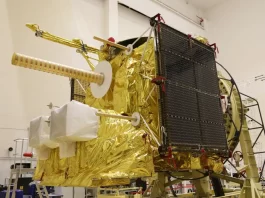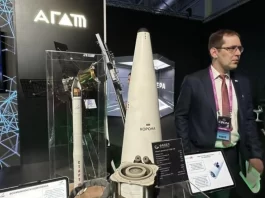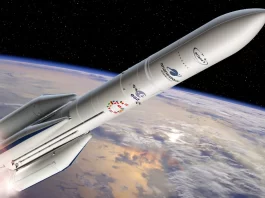India intends to launch its GSAT-20 (now GSAT-N2) satellite using a US rocket since the Indian Space Research Organisation (ISRO) is still working on a rocket that can lift more than four tonnes. Elon Musk’s Falcon-9 rocket, owned by SpaceX, is expected to launch the 4,700kg GSAT-20, built by ISRO, in the second quarter, according to NewSpace India Ltd.
“Currently, ISRO’s LVM3 rocket can carry up to four tons, but GSAT-20 exceeds this by 700 kg, hence the need for a different launch vehicle,” says Girish Linganna, a Bengaluru based Defence and Aerospace expert.
GSAT-20 is mainly designed to improve internet services, provide better communication for flights and ships (IFMC), and support mobile phone networks in transferring data (cellular backhaul). In simple terms, it aims to make internet and phone services better and more widely available.
A large part of the GSAT-20 satellite’s capability to transmit and receive a lot of data (known as High Throughput Satellite or HTS capacity) has already been reserved by companies in India that provide services like internet and phone communication. However, the names of these companies have not been shared by NSIL, the organisation responsible for managing the satellite’s commercial operations.
The GSAT-20 satellite uses advanced technology (Ka-Ka band HTS) to send and receive data. It has 32 separate signals or ‘beams’ that can reach anywhere in India, even distant places like the Lakshadweep Islands and the Andaman and Nicobar Islands. This means it can provide internet and communication services nationwide, including areas that are usually hard to connect.
NSIL mentions that the GSAT-20 satellite will handle about 48 gigabits per second of data. This means it can transfer a large amount of information simultaneously, making it effective for providing internet and communication services. It’s specially designed to meet the needs of areas that don’t have good connectivity right now, helping to bring them better internet and communication options.
“Previously, India used Arianespace’s Ariane rockets to launch its heavy communication satellites, which weighed four tons or more. Now, India has switched to using SpaceX for these launches. Some private satellite companies in India have already chosen SpaceX to launch their smaller satellites, as they find it more cost-effective than using ISRO’s services,” says Linganna.
Meanwhile, ISRO is developing a semi-cryogenic engine, enabling its rockets to carry payloads heavier than four tons.
This year, the Indian Space Research Organisation (ISRO) plans to test its semi-cryogenic engine, which uses a mix of Liquid Oxygen (LOX) and Kerosene as fuel.
On July 1, 2023, ISRO carried out its first major test of a version of this engine, called the Power Head Test Article (PHTA), at the ISRO Propulsion Complex in Mahendragiri, Tamil Nadu.
This test aimed to develop a powerful engine with 2000 kN thrust for the main stages of future rockets. However, during the test, there was an unexpected increase in pressure in the turbine and a decrease in its speed, leading to the early termination of the test.
“Semi-Cryogenic Engines: Complex Innovation”
“Creating semi-cryogenic engines for rockets is a difficult task. These engines, which run on a mix of liquid oxygen (LOX) and a hydrocarbon fuel such as kerosene, necessitate complex technology and precision engineering. Managing the extreme cold of liquid oxygen and the complex combustion temperatures, finding materials that can withstand these temperatures without becoming too heavy or brittle, balancing the engine’s power with fuel efficiency and reliability, ensuring safe handling of cryogenic materials and stable engine operation, and designing an engine that maximises thrust while minimising weight and size are among the challenges,” adds Linganna.
Each facet necessitates substantial research, testing, and fine-tuning, making it a difficult and intricate task.





